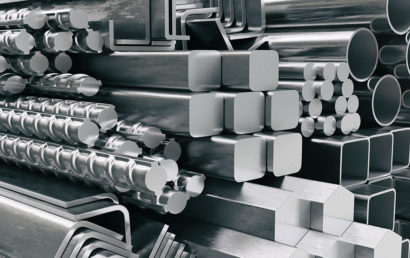Top 6 Thermal Spray Coating Uses In 2019
In nearly every industry in the entire world, thermal spray is being used to some extent. It can be used on the surface upon which we walk, on components inside high-tech machinery, on medical implants which remain in the body for decades, and much more. It can provide protection against harsh conditions, make a surface less slippery (for safety), repair a broken part to its original form and function, etc. It can extend the lifetime of a part or product, thereby lessening maintenance and downtime, and improving a business’s bottom line.
The uses of thermal spray through time are all but unlimited. But in this current day and age, what are its most popular or common uses?
Provide a Coating That Is Chemically Resistant
Thermal spray is used in railroad applications.
As an example, to prevent the pollution of the iron magazine and ensure the purity of liquid goods, on the inside of a liquid freight car, thermal spray may be used. To avoid paint procedures during operation, and to effectively prevent corrosion, zinc can be thermal sprayed on railway vehicles.
To protect gates of water systems, power towers, and freshwater pipelines, thermal spray coatings can be utilized. In fact, without needing re-spraying or repairing, a 10 year life expectancy can be expected.
Offshore engineering also uses thermal spraying. To achieve good long-term protection, it can be used for the deck, hall, tugboat, large flat body, or concrete part of the barge. For corrosion on their ships, the United States Navy has put thermal spray coatings on their “much used” list.
Coatings That Resist Cavitation
Since the 1950s, wellhead devices on the surface of the sea have been sprayed to help them better deal with salt atmosphere-created erosion. For external protection of propane gas and oil tanks and conical cooling towers, this technology has been the most common.
Coatings That Provide a Thermal Barrier
In flame stabilizers, valves, gas turbine combustion chambers, and diesel engine pistons, a common use of thermal spray is for the application of thermal barrier coatings. In an exceedingly severe work environment, the effects of both high pressure and high temperatures are resisted thanks to thermal spraying.
Coatings That Resist High Temperature Oxidation
During operation, high temperature oxidation can occur in combustion chambers of jet engines. To resist this oxidation, a special coating is sprayed into the combustion chamber.
Additionally, the service life of a ship’s factory chimney can be improved by five times after spraying an anti-high-temperature oxidation coating on the chimney.
Coatings That Provide Size Recovery
When workpieces need to be restored (in size or shape), one cost-effective way is through thermal spraying. A surface can be changed or filled with thermal spray. Compared to special plating processes, this method is not as expensive, and it does not cause deformation. The new surface can consist of the same material as the workpiece, corrosion resistant material, or wear resistant material.
As an example, making it more resistant to corrosion and impact, and possible of restoring thickness, thermal spray may be applied to the turbine blades of a hydropower station. They are frequently affected negatively by corrosive substances.
Coatings That Enhance Surface Hardness
Corrosion, abrasion, impact, sliding, vibration, etc., can cause wear on parts and machinery during operation. However, time resistant to chemicals and heat, thermal spray anti-wear coatings can help. The aerospace industry uses coatings of this nature to prevent engine blades against erosion and air impact effects.
A&A Coatings knows full well the possibilities of thermal spray coatings in this day and age. If you’d like to find out more about the benefits of thermal spray, and the applications in which it can be used, contact one of our knowledgeable representatives today.




